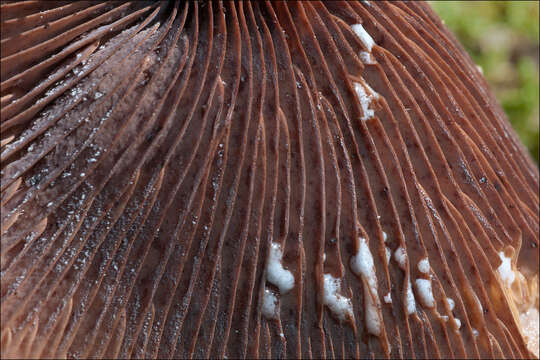Lactarius-camphoratus_6

Kuvaus:
Lactarius camphoratus (Bull.: Fr.) Fr., syn.: Lactarius cimicarius BartschCurry Milkcap, DE: Kampfermilchling, Kleiner Zichorien-MilchlingSlo.: kafrna mlenicaDat.: Sept. 09. 2014Lat.: 46.36529 Long.: 13.74988Code: Bot_835/2014_DSC3920Habitat: mixed wood, Picea abies and Fagus sylvatica dominant trees, moderately inclined calcareous ground, eventually locally somewhat acid; NW oriented mountain slope, humid and shady place, partly protected from direct rain by tree canopies; average precipitations ~ 3.000 mm/year, average temperature 5-7 deg C, elevation 950 m (3.100 feet), alpine phytogeographical region.Substratum: moss covered forest soil among (decayed) roots of a Picea abies stump in its latest stage of disintegration (decomposed almost to soil).Place: Lower Trenta valley, next to the trail from village Trenta to Planina Lepo, East Julian Alps, Posoje, Slovenia EC.Comments: Dull, matt, like velvety, ocher-red-brown color of pilei and fairly 'unicolor' appearing fruit bodies are typical for this quite common milkcap. However, several very similar species like Lactarius quietus, Lactarius rufus, Lactarius badiosanguineus and Lactarius serifluus exist growing almost in the same habitat. Yet, determination of Lactarius camphoratus seems still quite easy. Decisive is its smell on 'kitchen spices'. It is already noticeable whit fresh fruit bodies but becomes obtrusively strong when they are dried. In the literature the smell is described like on curry, on 'Maggi', on chicory, on camphor, etc.. Anyway, the smell is strong, specific and hard to forget.Growing in several groups of up to four pilei together, more than 15 pilei all together present; pilei diameter 4 - 5 cm; stipe 3 - 4 cm tall and about 8 - 9 mm in diameter; taste mild but distinctive, mushroomy, slightly unpleasant; smell first mild, later stronger and particularly strong when dry, on spices; flesh quite brittle; SP abundant, beige, oac857; pilei not bruising; milk quite abundant, whitish, actually consisting of watery fluid with white milky, like coagulated, inclusions; milk not changing color and remaining white even when dry and of mild taste, not burning or being distinctly bitter.Spores coarsely warty with some ridges. Dimensions: 6.9 [7.6 ; 7.9] 8.6 x 6 [6.7 ; 7] 7.7 microns; Q = 1.1 [1.12 ; 1.15] 1.2; N = 32; C = 95%; Me = 7.7 x 6.8 microns; Qe = 1.1.Olympus CH20, NEA 100x/1.25, magnification 1.000 x, oil; in water; live material. AmScope MA500 digital camera.Herbarium: Mycotheca and lichen herbarium (LJU-Li) of Slovenian Forestry Institute, Vena pot 2, Ljubljana, Index Herbariorum LJFRef.:(1) G.J. Krieglsteiner (Hrsg.), Die Grosspilze Baden-Wrttembergs, Band 2., Ulmer (2000), p 407. (2) R. M. Daehncke, 1200 Pilze in Farbfotos, AT Verlag (2009), p 984. (3) J. Breitenbach, F. Kraenzlin, Eds., Fungi of Switzerland, Vol.6. Verlag Mykologia (2005), p 52.(4) M. Bon, Parey's Buch der Pilze, Kosmos (2005), p 98. (5) R. Lueder, Grundkurs Pilzbestimmung, Quelle & Meyer (2008), p 191. (6) S. Buczacki, Collins Fungi Guide, Collins (2012), p 294.
Mukana seuraavilla sivuilla:
- Life
- Cellular
- Eukaryota (aitotumaiset)
- Opisthokonta
- Nucletmycea
- Fungi
- Dikarya
- Basidiomycota (Kantasienet)
- Agaricomycetes (Avokantaiset)
- Russulales
- Russulaceae (Haperot ja rouskut)
- Lactarius (Rouskut)
- Lactarius camphoratus (sikurirousku)
Tämä kuva ei ole esillä missään kokoelmassa.
Lähdetiedot
- lisenssi
- cc-by-nc-sa
- tekijänoikeus
- Amadej Trnkoczy
- valokuvaaja
- Amadej Trnkoczy
- alkuperäinen
- alkuperäinen mediatiedosto
- käy lähteessä
- kumppanisivusto
- Flickr Group
- ID


